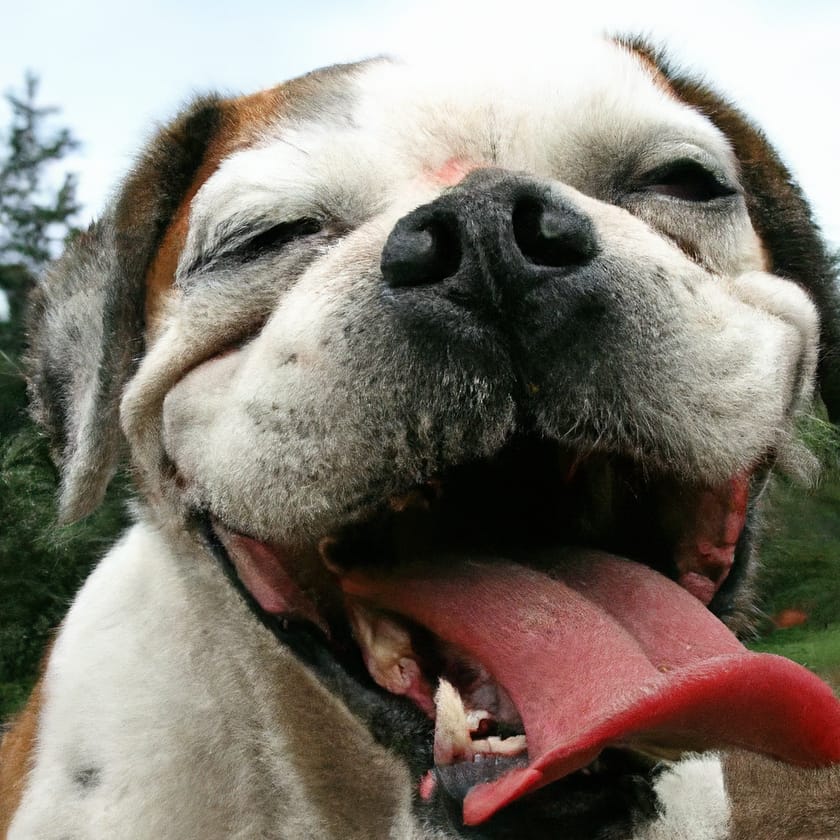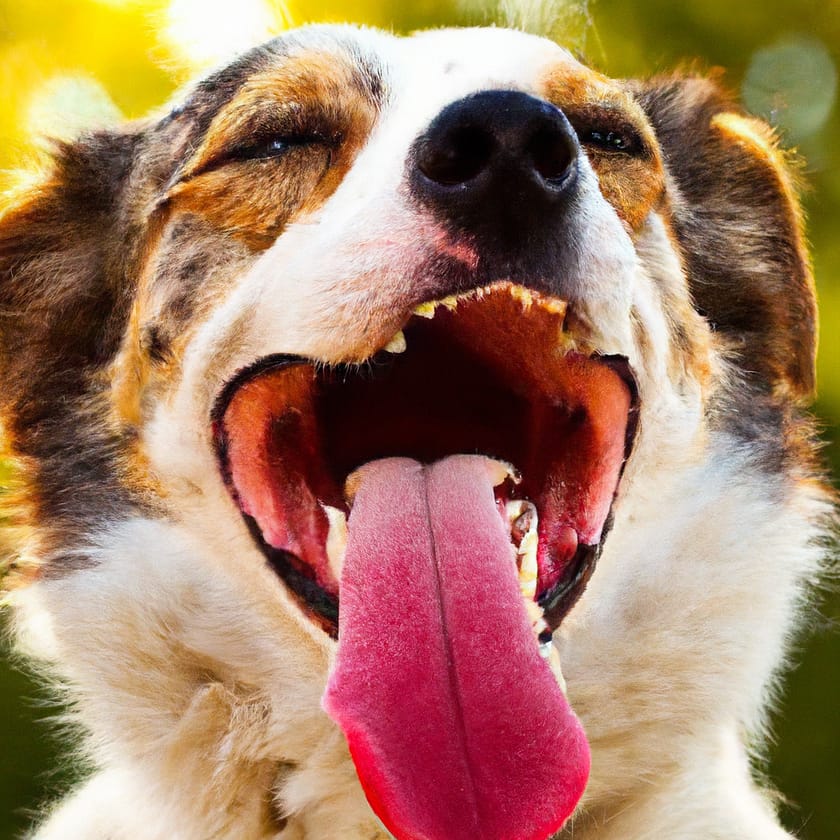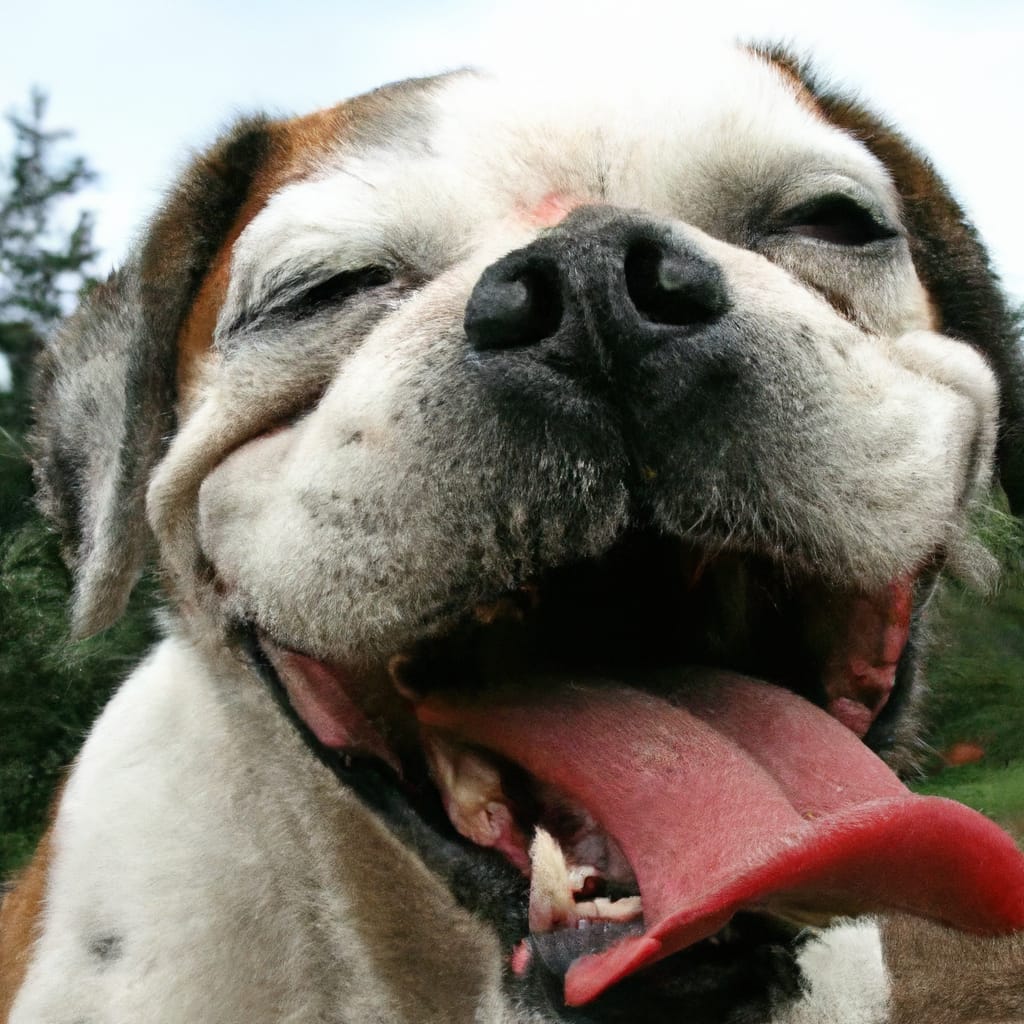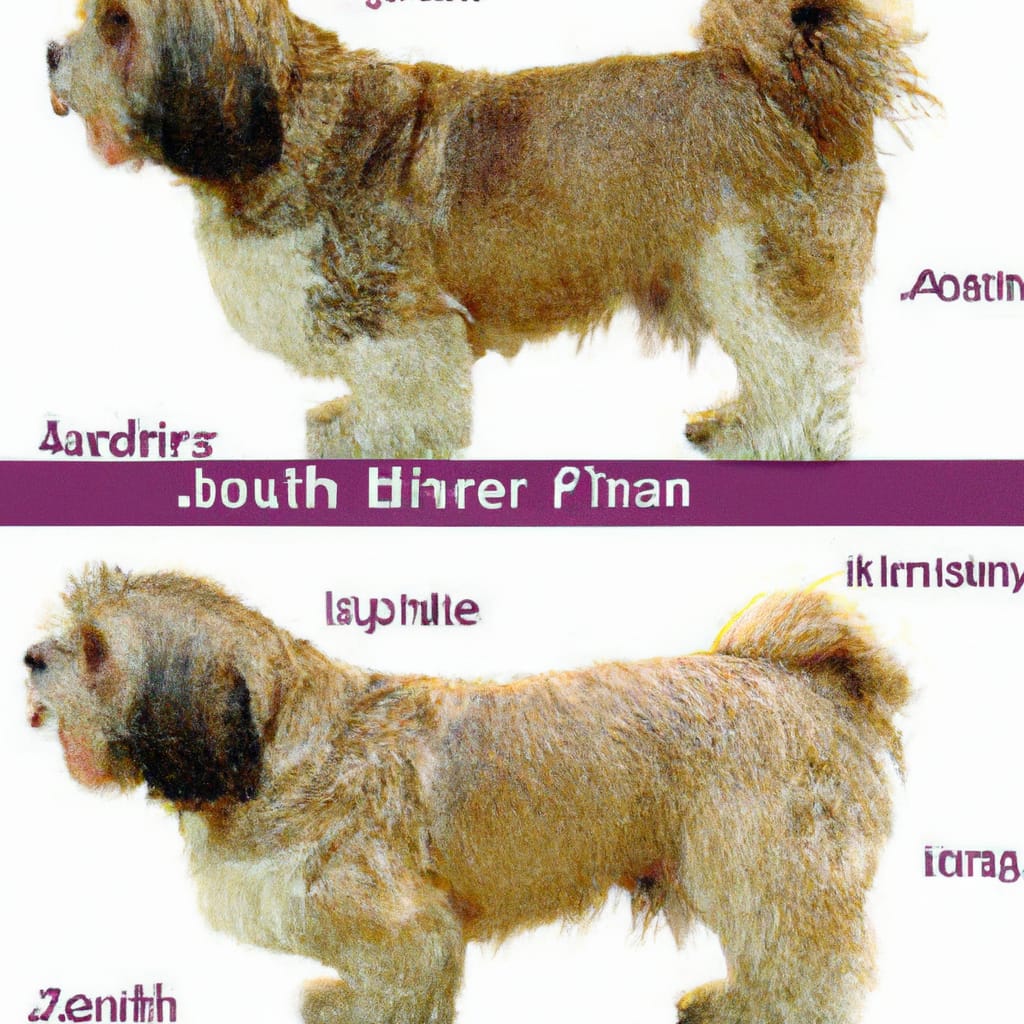Why Is My Dog Panting So Much?
Have you ever wondered why your furry friend breathes heavily and pants so much? It’s a common concern among dog owners, and understanding the reasons behind this behavior is crucial for their well-being. Whether it’s a normal physiological response to exercise or a sign of a more serious underlying issue, this article will explore the various factors causing your dog to pant excessively. So, let’s unravel the mystery and help you better understand why your dog is panting so much.
Possible Causes of Excessive Panting in Dogs
Excessive panting in dogs can be a cause for concern, as it may indicate an underlying issue or discomfort. There are several possible causes of excessive panting in dogs, including physical exertion, heat and humidity, anxiety or stress, pain or discomfort, and respiratory or cardiovascular problems.
Physical exertion
One possible cause of excessive panting in dogs is physical exertion. Dogs who engage in vigorous exercise or play may pant heavily to regulate their body temperature. Exercise-induced panting is a normal response and typically subsides once the dog has rested. However, if your dog continues to pant excessively even after rest, it may be a sign of an underlying issue.
Heat and humidity
Dogs regulate their body temperature through panting, especially in hot and humid weather. Panting helps evaporate moisture from their tongues and respiratory tract, allowing them to cool down. However, when the temperature and humidity levels become too high, dogs may struggle to regulate their body temperature effectively, leading to excessive panting. It’s important to provide them with access to cool, shaded areas and fresh water to prevent heat-related panting.
Anxiety or stress
Anxiety or stress can also cause excessive panting in dogs. Panting can be a response to fear or nervousness, as dogs may breathe rapidly and heavily to cope with emotional distress. Dogs experiencing separation anxiety, fear of thunderstorms or fireworks, or undergoing stressful situations may exhibit excessive panting. Identifying and addressing the underlying cause of anxiety is essential to help alleviate panting episodes.
Pain or discomfort
Dogs may pant excessively in response to pain or discomfort. When dogs are in pain, their bodies release stress hormones, leading to increased respiration and panting. Common pain-related conditions that may cause panting include injuries, arthritis, dental problems, and gastrointestinal issues. If you suspect that your dog’s panting is due to pain or discomfort, it’s important to consult a veterinarian for proper diagnosis and treatment.
Respiratory or cardiovascular problems
Respiratory or cardiovascular problems can also lead to excessive panting in dogs. Respiratory infections, allergies, and lung or airway diseases can cause difficulty breathing, resulting in heavy panting. Similarly, cardiovascular issues such as heart diseases, high blood pressure, and heartworm disease can lead to panting as the heart works harder to pump blood. Identifying the underlying cause of these conditions is crucial to provide appropriate medical interventions and manage the panting.
Signs and Symptoms of Excessive Panting in Dogs
Recognizing the signs and symptoms of excessive panting in dogs is vital in understanding their overall health and well-being. It’s important to pay attention to the following indicators:
Excessive drooling
Excessive drooling, accompanied by panting, can be a sign of heat exhaustion, stress, or pain. If your dog is drooling excessively and panting heavily, it is essential to monitor their behavior and take appropriate measures to address the underlying cause.
Rapid breathing
Rapid breathing is another common sign of excessive panting in dogs. If you notice that your dog is breathing rapidly, even at rest or in cool environments, it may indicate an issue that requires attention. Monitoring their respiratory rate and seeking veterinary advice can help identify and address the cause.
Seeking cool surfaces
Dogs instinctively seek cool surfaces when they are experiencing excessive panting. If your dog is continuously lying on cool tiles or seeking shade, it may suggest that they are struggling to regulate their body temperature. Providing them with access to cool areas and ensuring proper hydration can help alleviate their panting.
Restlessness
Restlessness is often observed in dogs experiencing excessive panting. They may pace, have difficulty settling down, or exhibit signs of discomfort. Restlessness can be a result of anxiety, pain, or an underlying medical condition. Assessing their behavior and seeking veterinary guidance can help provide relief and address any underlying issues.
Lethargy
Lethargy, or a lack of energy and enthusiasm, can be indicative of excessive panting in dogs. If your dog appears unusually tired or lacks their usual vigor, it may be a sign of an underlying problem. Monitoring their activity levels and seeking veterinary advice can help determine the cause and provide appropriate care.

Physical Exertion and Panting
Physical exertion plays a significant role in dogs’ panting behavior. Understanding the effects of exercise and play on panting can help you determine whether your dog’s panting is within normal limits or requires attention.
Exercise-induced panting
Exercise-induced panting is a natural response in dogs. During exercise, dogs pant to increase their respiratory rate and regulate their body temperature. As they exert themselves, their muscles generate heat, and panting helps release that heat through respiration. After completing exercise, dogs may continue to pant for a while to cool down. It’s important to note that exercise-induced panting typically subsides once the dog has rested.
Panting after play or activity
After engaging in vigorous play or activity, dogs may experience panting. This post-activity panting is often a sign that your dog is regulating their body temperature and recovering from exertion. It’s essential to monitor your dog after play and provide them with appropriate rest and hydration to ensure a smooth recovery.
Different breeds and activity levels
It’s important to consider that different breeds and activity levels can influence the amount of panting exhibited by dogs. Certain breeds, such as Bulldogs and Pugs, have shorter muzzles and narrower airways, making them more prone to excessive panting. Additionally, dogs with higher activity levels may pant more frequently as they require greater oxygen intake. Understanding your dog’s breed and physical capabilities can help you determine whether their panting is within normal limits. If you have concerns about their panting episodes, consult with a veterinarian for further evaluation.
Heat and Humidity Effects on Dogs
Heat and humidity can greatly impact a dog’s ability to regulate their body temperature, leading to excessive panting and potential heat-related issues. Understanding their cooling mechanism and the signs of heat stroke can help you protect them from heat-related problems.
Normal cooling mechanism
Dogs primarily cool themselves through panting. When they pant, they inhale air through their mouths and exhale it through their panting process, allowing evaporation and heat release. Their tongues and respiratory tracts are designed to promote evaporation and aid in cooling. However, in high heat and humidity, dogs may struggle to cool down effectively, causing panting to intensify.
Excessive panting as heat regulation
Excessive panting is a dog’s way of trying to regulate their body temperature in response to heat. When ambient temperatures rise, dogs increase their respiratory rate to facilitate the evaporation of moisture from their respiratory tracts. The evaporation process helps cool their bodies. However, when panting becomes excessive and prolonged, it may be a sign that their cooling mechanism is overwhelmed or compromised.
Signs of heat stroke
Heat stroke, a severe form of heat-related illness, can occur when dogs are exposed to high temperatures and humidity for extended periods without adequate relief. Signs of heat stroke include excessive panting, difficulty breathing, rapid heart rate, drooling, weakness, collapse, and even loss of consciousness. Heat stroke is a medical emergency that requires immediate veterinary attention.
Preventing heat-related panting
To prevent heat-related panting and potential heat stroke, it’s crucial to take appropriate measures to keep your dog cool and hydrated. Provide them with access to shaded areas, fresh water, and avoid exposing them to extreme heat and humidity. Additionally, never leave your dog unattended in a parked car, as temperatures can rapidly elevate to dangerous levels.

Anxiety and Stress as Panting Triggers
Anxiety and stress can manifest in various ways in dogs, with excessive panting being one of the potential indicators. Understanding how these factors can trigger panting episodes and implementing appropriate management strategies is important for your dog’s well-being.
Panting as a response to fear or anxiety
Panting can be a natural response to fear or anxiety in dogs. When faced with stressful situations or triggers, dogs may exhibit rapid, shallow breaths and increased panting. Panting helps them cope with their heightened emotional state and regulate their breathing patterns. Recognizing panting as a potential sign of fear or anxiety can help you address the underlying cause and help your dog feel more comfortable.
Causes of anxiety in dogs
Various factors can contribute to anxiety in dogs, including separation anxiety, fear of loud noises (such as thunderstorms or fireworks), changes in routine, or past traumatic experiences. Identifying the specific triggers or sources of anxiety can help tailor management strategies and provide a calmer environment for your dog.
Treatment or management options
If anxiety is causing excessive panting in your dog, there are several treatment or management options available. For mild cases, creating a safe and secure environment, using positive reinforcement training techniques, and gradually desensitizing your dog to anxiety-provoking situations can be beneficial. However, in severe cases, professional intervention may be necessary. Consult with a veterinarian or a qualified animal behaviorist to devise a comprehensive treatment plan to address your dog’s anxiety and reduce panting episodes.
Pain and Discomfort causing Panting
Panting can be a response to pain or discomfort in dogs. Recognizing this connection is crucial in identifying and addressing any underlying issues that may be causing their panting.
Panting as a response to pain
Dogs may pant excessively in response to pain. When in pain, their bodies release stress hormones, resulting in increased respiration and panting. This physiological response is an attempt to manage the pain and provide oxygen to tissues. Monitoring your dog’s behavior alongside their panting can help you assess whether pain or discomfort is the underlying cause.
Common pain-related conditions
Various conditions can cause pain or discomfort in dogs, leading to excessive panting. Injuries, such as sprains or fractures, dental issues, arthritis, gastrointestinal problems, and ear infections are common sources of discomfort that may trigger panting episodes. Consulting with a veterinarian and conducting necessary diagnostic tests can help identify and address the specific underlying condition.
Consulting a veterinarian
If you suspect that pain or discomfort is causing your dog’s excessive panting, it’s important to consult a veterinarian. They can conduct a thorough examination, assess your dog’s overall health, and recommend appropriate diagnostic tests. Depending on the underlying condition, treatment options may include pain management medications, physical therapy, dietary changes, or surgical interventions.
Respiratory Issues and Heavy Panting
Respiratory problems can significantly impact a dog’s breathing, leading to heavy panting. Understanding common respiratory issues and their potential effects on dogs can help you identify and address any underlying problems.
Respiratory infections
Respiratory infections, such as kennel cough or pneumonia, can cause difficulty breathing and heavy panting in dogs. These infections affect the upper respiratory system and may result in coughing, wheezing, nasal discharge, and increased respiratory effort. If you suspect a respiratory infection, it’s important to consult with a veterinarian for proper diagnosis and treatment.
Allergies
Allergies can trigger respiratory problems in dogs, leading to excessive panting. Allergens, such as pollen, dust mites, or certain foods, can cause inflammation and irritation in the respiratory tract. Dogs with allergies may exhibit symptoms such as coughing, sneezing, wheezing, or nasal congestion. Identifying and managing allergens through a tailored treatment plan can help alleviate panting and respiratory distress.
Lung or airway diseases
Diseases affecting the lungs or airways can restrict airflow and cause heavy panting in dogs. Conditions such as bronchitis, asthma, collapsing trachea, or tumors can lead to breathing difficulties and increased respiratory effort. If you suspect your dog has a lung or airway disease, seeking veterinary guidance is essential for diagnosis and appropriate treatment.
Diagnosing respiratory problems
Diagnosing respiratory problems requires a comprehensive examination by a veterinarian. They may perform diagnostic tests, such as x-rays, blood work, or bronchoscopy, to evaluate the condition of the respiratory system. Treatment options may include medications, oxygen therapy, or, in severe cases, surgery. Prompt diagnosis and intervention are crucial in managing respiratory issues and reducing panting in affected dogs.
Cardiovascular Problems and Panting
Cardiovascular problems can significantly impact a dog’s overall health and lead to excessive panting. Understanding common cardiovascular issues and their potential effects on dogs can help you provide appropriate medical interventions.
Heart diseases
Heart diseases can cause panting in dogs as the heart struggles to pump blood efficiently. Conditions such as congestive heart failure, mitral valve disease, or dilated cardiomyopathy can lead to increased respiratory effort and heavy panting. If you suspect that your dog has a heart condition, consulting with a veterinarian for a thorough cardiac evaluation is essential.
High blood pressure
High blood pressure, or hypertension, can occur as a primary condition or as a result of an underlying medical issue in dogs. Elevated blood pressure can strain the heart and contribute to excessive panting. Identifying and managing the underlying cause of hypertension, along with proper medication, can help reduce panting episodes and improve the dog’s cardiovascular health.
Heartworm disease
Heartworm disease is a serious and potentially life-threatening condition caused by the transmission of parasitic worms through mosquito bites. As the worms infest the dog’s heart and blood vessels, they obstruct blood flow and impede proper heart function. Heavy panting is one of the symptoms of advanced heartworm disease. Preventive measures, such as regular heartworm medication, can help protect your dog from this condition.
Medical interventions to manage cardiovascular problems
Treating cardiovascular problems in dogs requires veterinary expertise. Depending on the specific condition, treatment options may include medications to manage symptoms and improve heart function, dietary changes to support cardiac health, or surgical interventions. Regular veterinary check-ups, monitoring your dog’s respiratory rate, and adhering to prescribed medications are crucial for managing cardiovascular issues.
Other Medical Conditions that Cause Panting
In addition to the aforementioned causes, several other medical conditions can lead to excessive panting in dogs. It’s important to be aware of these potential underlying issues to ensure your dog’s well-being.
Cushing’s disease
Cushing’s disease, also known as hyperadrenocorticism, is a condition characterized by excess production of cortisol hormone. Dogs with Cushing’s disease may exhibit symptoms such as excessive panting, increased thirst and urination, weight gain, and hair loss. Diagnosis and treatment of Cushing’s disease involve comprehensive veterinary evaluation and may include medication, dietary management, or, in some cases, surgery.
Diabetes
Diabetes is a metabolic disorder that affects the regulation of blood sugar levels. Dogs with diabetes may pant excessively, along with displaying increased thirst, frequent urination, weight loss, and changes in appetite. Diagnosis and treatment of diabetes involve veterinary consultation, monitoring blood sugar levels, medication (including insulin), and dietary management.
Thyroid dysfunction
Thyroid dysfunction, whether hypothyroidism or hyperthyroidism, can impact various bodily functions in dogs. Excessive panting may occur as a result of altered hormone levels in the body. Other symptoms of thyroid dysfunction include weight changes, changes in coat quality, lethargy, and changes in behavior. Veterinary evaluation and appropriate medication or dietary management are necessary to address thyroid dysfunction.
Neurological disorders
Certain neurological disorders can lead to excessive panting in dogs. Conditions such as seizures, brain tumors, or encephalitis can cause irregular breathing patterns and increased respiratory effort. Monitoring your dog’s behavior and seeking veterinary guidance are essential in diagnosing and managing neurological disorders that may contribute to panting episodes.
When to Consult a Vet for Excessive Panting
While panting is a normal behavior for dogs, excessive panting can indicate an underlying issue that requires veterinary attention. It’s important to be aware of the following circumstances that warrant a visit to the veterinarian:
Persistent or worsening panting
If your dog’s panting persists or worsens over time, it may indicate an underlying problem that requires medical intervention. Your veterinarian can conduct a thorough examination and recommend appropriate diagnostic tests to identify the cause of the excessive panting.
Accompanied by other concerning symptoms
Excessive panting in conjunction with other concerning symptoms, such as coughing, wheezing, difficulty breathing, vomiting, or diarrhea, may suggest a more serious underlying issue. A veterinarian can assess your dog’s overall health and determine the appropriate course of action.
Changes in behavior or appetite
If your dog exhibits changes in behavior, such as increased anxiety, aggression, or lethargy, along with excessive panting, it may indicate an underlying problem. Changes in appetite, either increased or decreased, can also be a sign of an issue. Consulting with a veterinarian can help identify and address any underlying medical or behavioral conditions.
Diagnostic tests and exams
If your dog’s excessive panting persists or is accompanied by concerning symptoms, a veterinarian may recommend diagnostic tests or exams. These may include blood work, x-rays, ultrasounds, or more specialized tests to evaluate your dog’s overall health and identify any underlying conditions that may be causing the excessive panting.
In conclusion, excessive panting in dogs can have various causes, ranging from physical exertion to underlying medical conditions. Understanding the signs and symptoms of excessive panting, as well as the possible causes, is crucial in ensuring the well-being of our furry companions. Always consult with a veterinarian for proper diagnosis, treatment, and management of any underlying issues contributing to excessive panting in your dog. By providing them with appropriate care and attention, we can ensure that they lead happy and healthy lives.













